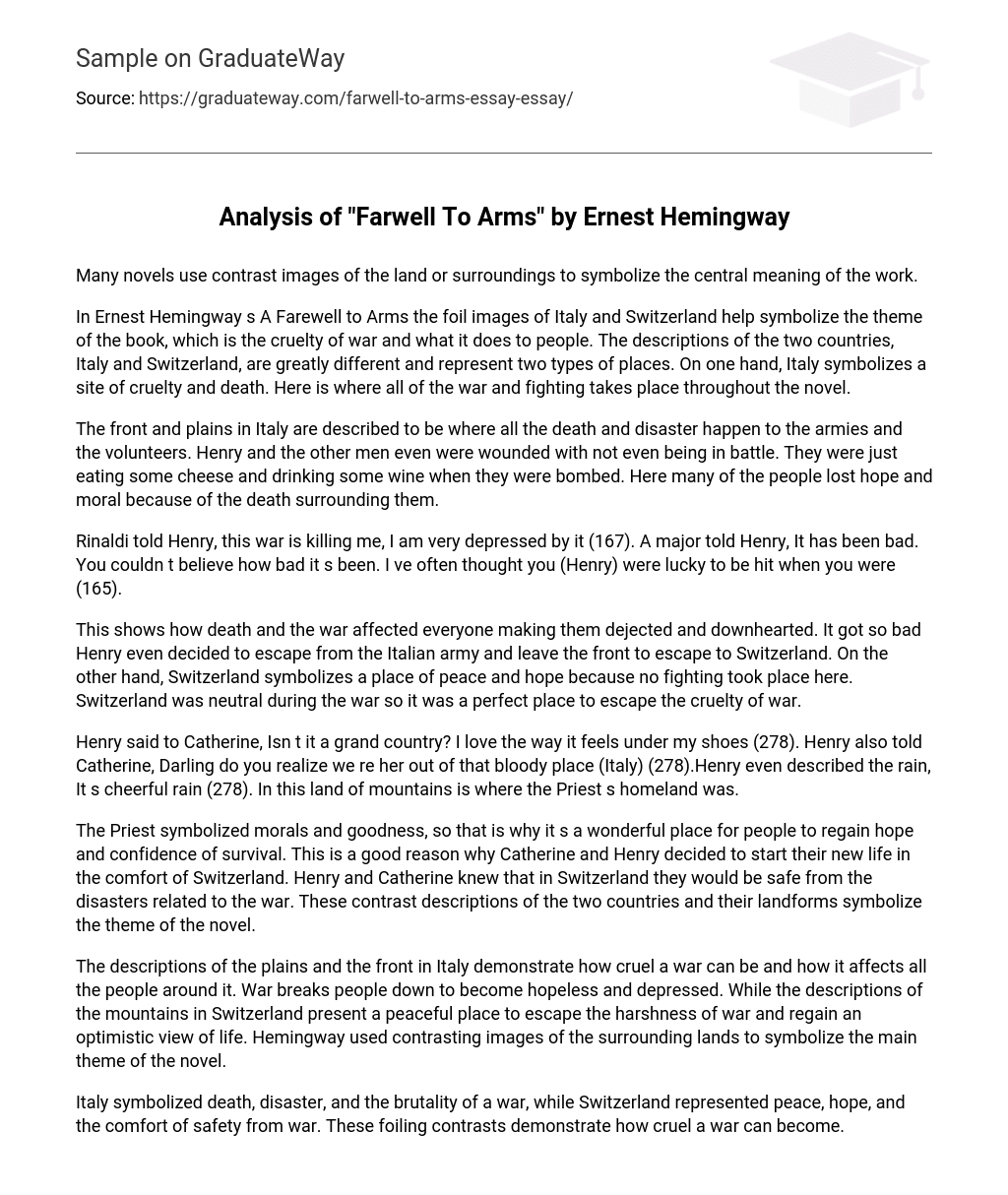Many novels use images of contrasting landscapes or surroundings to symbolize the central theme of the piece.
In Ernest Hemingway’s A Farewell to Arms, the contrasting depictions of Italy and Switzerland serve as foils that symbolize the book’s theme: the devastating impact of war on individuals. The descriptions of these countries are starkly dissimilar, representing two distinct settings. Italy embodies a place of brutality and loss, where the novel’s war and conflict unfold.
According to the description, the front and plains in Italy are the locations where the armies and the volunteers experience death and disaster. Henry and his companions were injured without even participating in battle; they were simply enjoying some cheese and wine when they were bombed. The prevalent death in this area caused many individuals to lose hope and morale.
Rinaldi expressed his despair about the war to Henry, stating that it was causing him great depression (167). A major shared with Henry that the situation had been extremely difficult and beyond belief, suggesting that Henry was fortunate to have been wounded earlier in the war (165).
This demonstrates the impact of death and war on individuals, resulting in their despondency and sadness. The effect was so overwhelming that Henry felt compelled to flee from the Italian army and abandon the front, seeking refuge in Switzerland. Conversely, Switzerland embodies a sanctuary of tranquility and optimism, as it remained untouched by conflict. Its neutrality during the war made it an ideal destination to escape from the brutality of battle.
Henry expressed his admiration for the country to Catherine, mentioning how much he enjoyed the sensation under his shoes (278). He also referred to their escape from Italy, commenting on leaving that unpleasant place (278). Additionally, Henry described the rain as being cheerful (278). The mountains in this land were where the Priest’s homeland was situated.
The Priest represented moral values and righteousness, making Switzerland an ideal place for individuals to restore their hope and confidence in survival. This is precisely why Catherine and Henry opted to embark on their fresh journey within the comforting embrace of Switzerland. They understood that by being in Switzerland, they would be shielded from the calamities associated with war. These contrasting portrayals of both nations and their geographical features serve as a representation of the central theme of the novel.
In the novel, Hemingway juxtaposes the descriptions of the harsh plains and front in Italy with the serene mountains in Switzerland. This contrast highlights the devastating effects of war on people, who become hopeless and depressed. On the other hand, the peaceful mountains offer an escape from the brutality of war, allowing individuals to regain optimism and hope. Hemingway effectively utilizes these contrasting images of different landscapes to convey the main theme of the novel.
Italy symbolized the embodiment of death, disaster, and the brutality of war, while Switzerland stood as the representation of peace, hope, and the solace of being sheltered from the ravages of war. These stark oppositions serve to illustrate the extent to which war can unleash its cruel nature.





